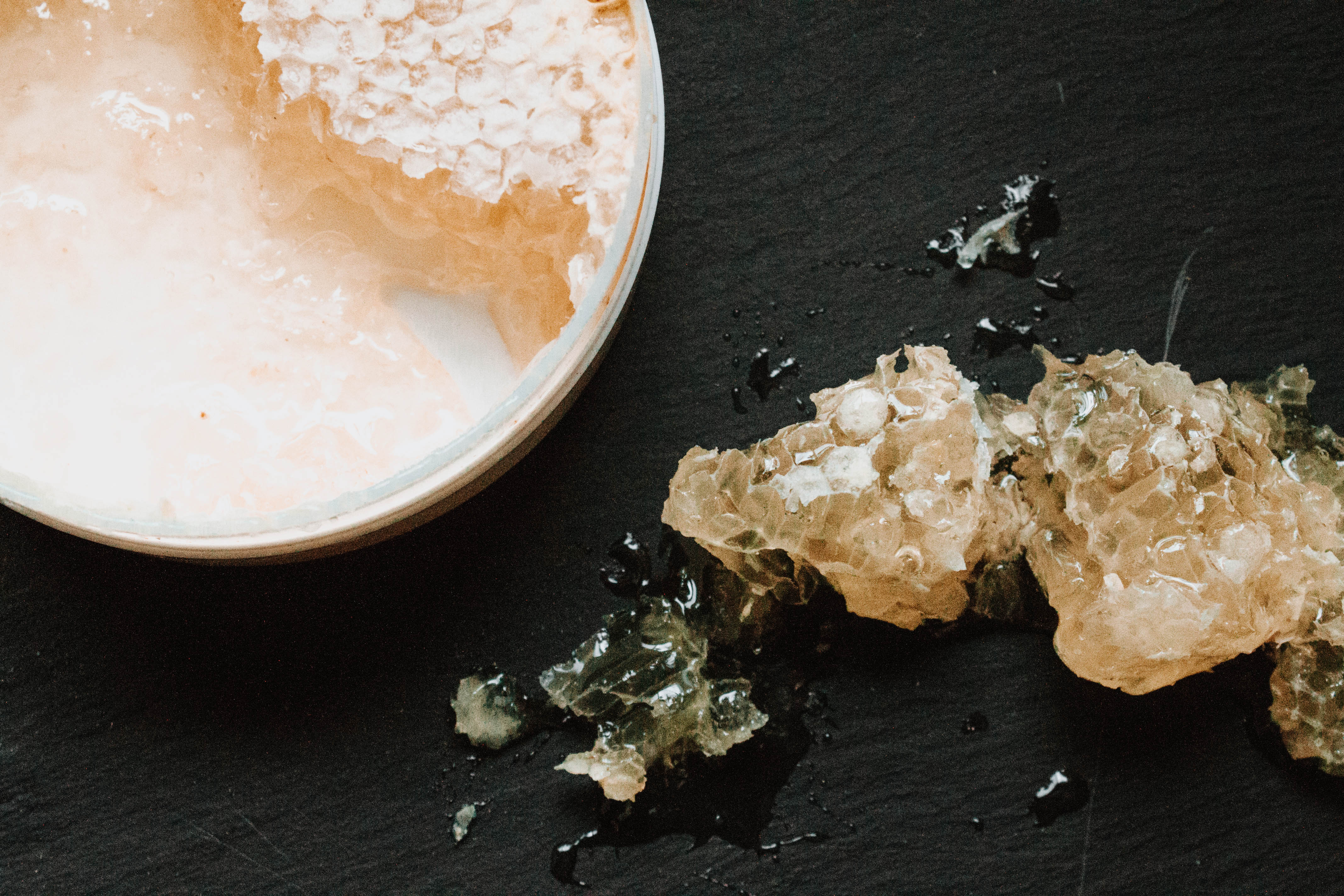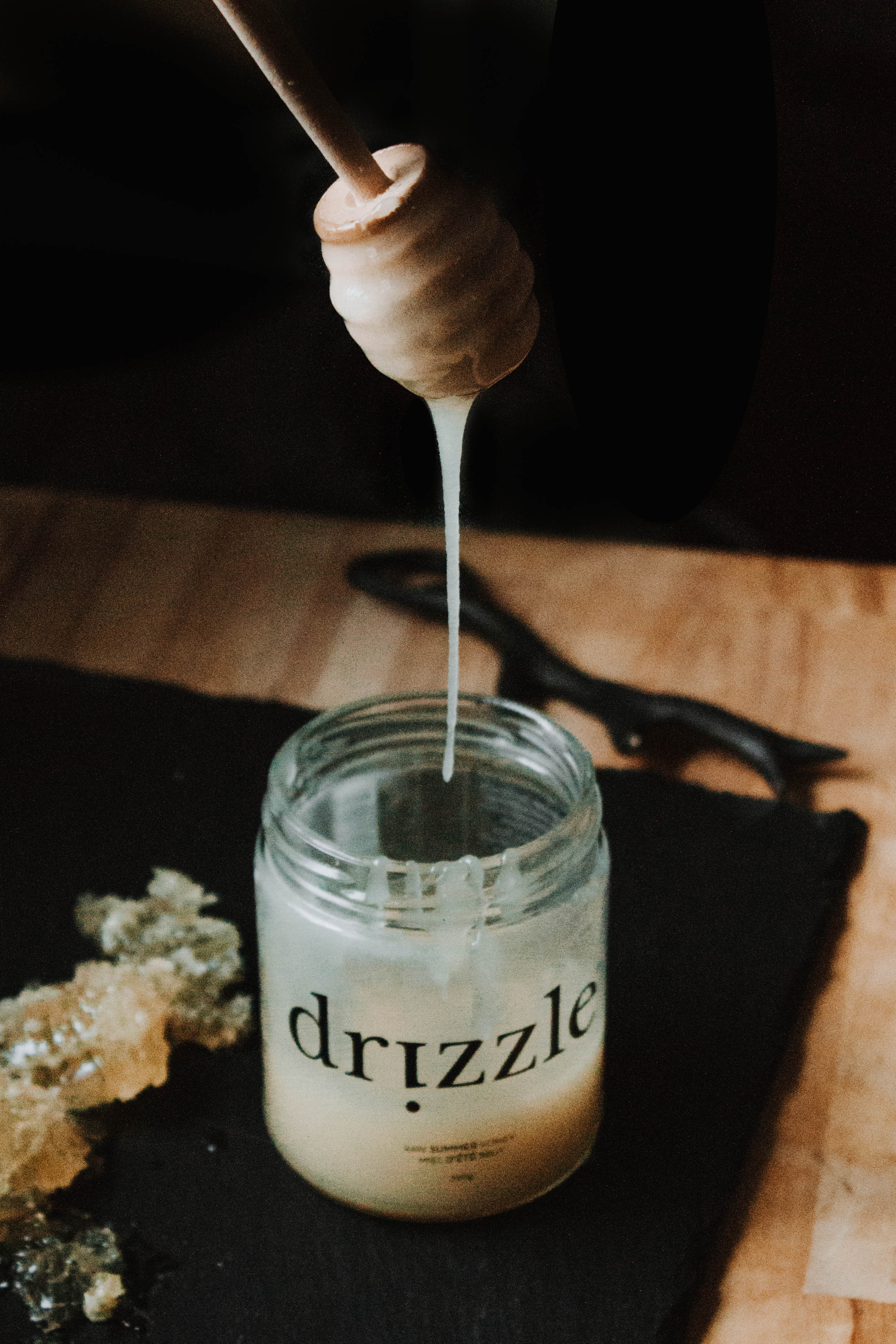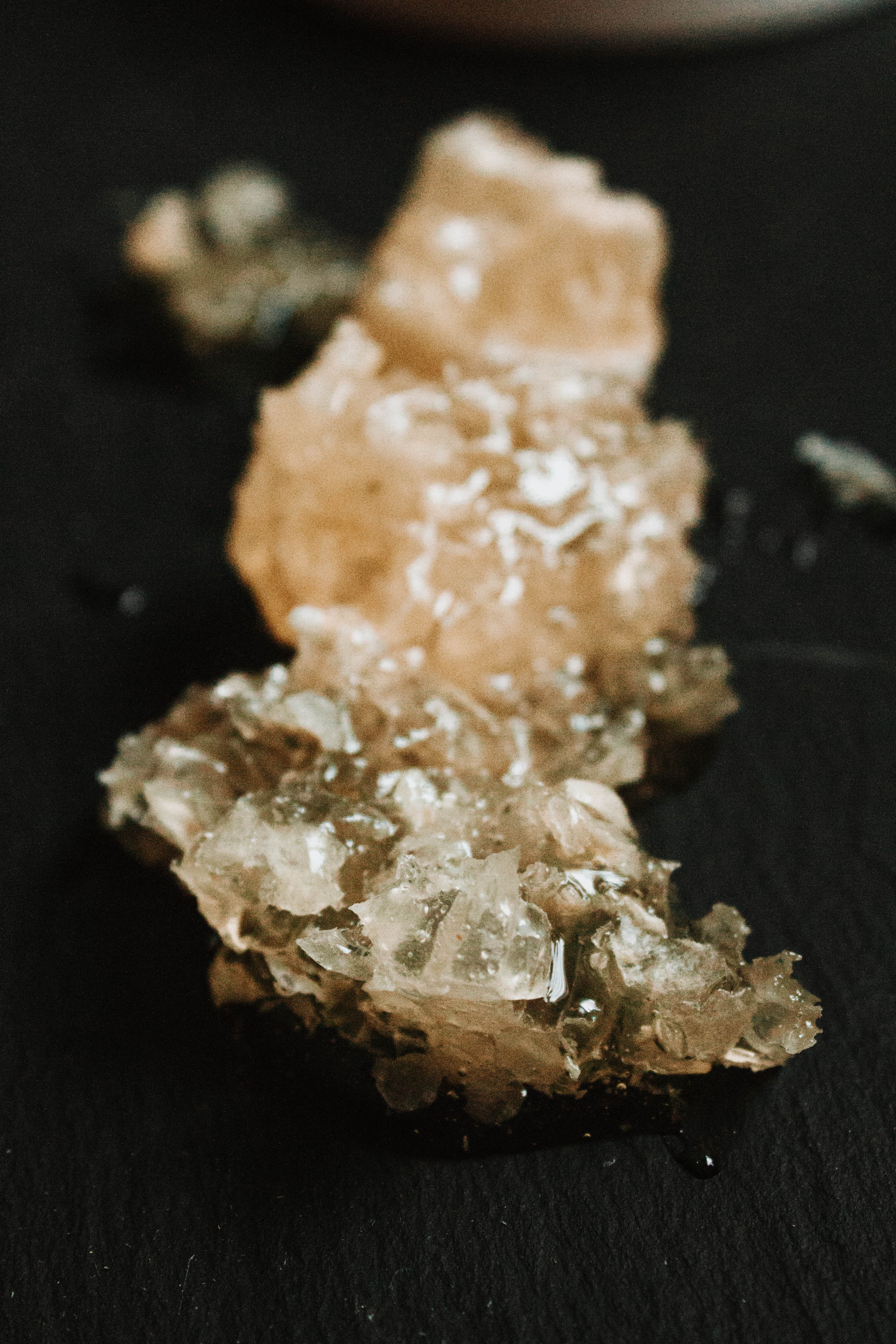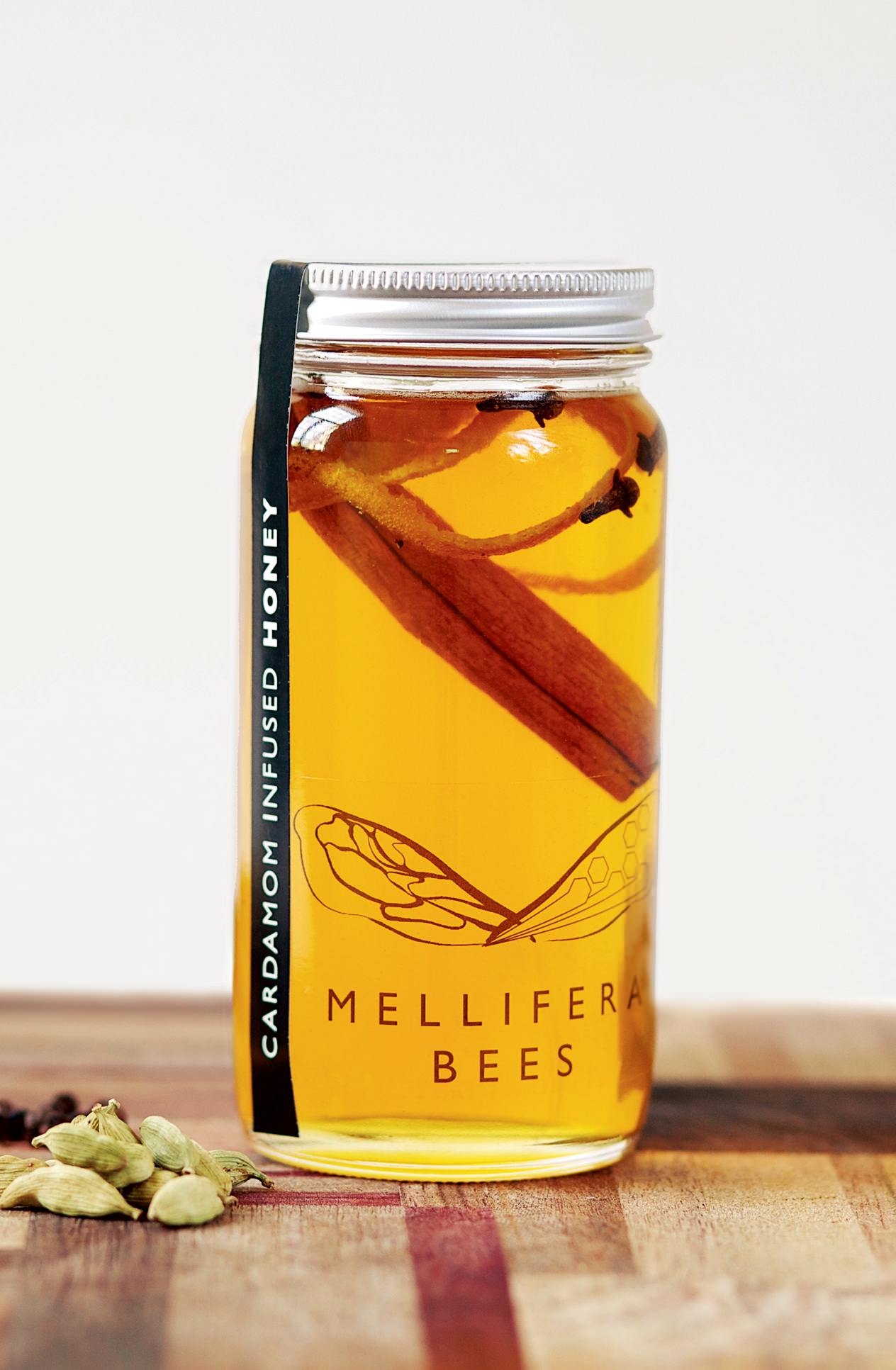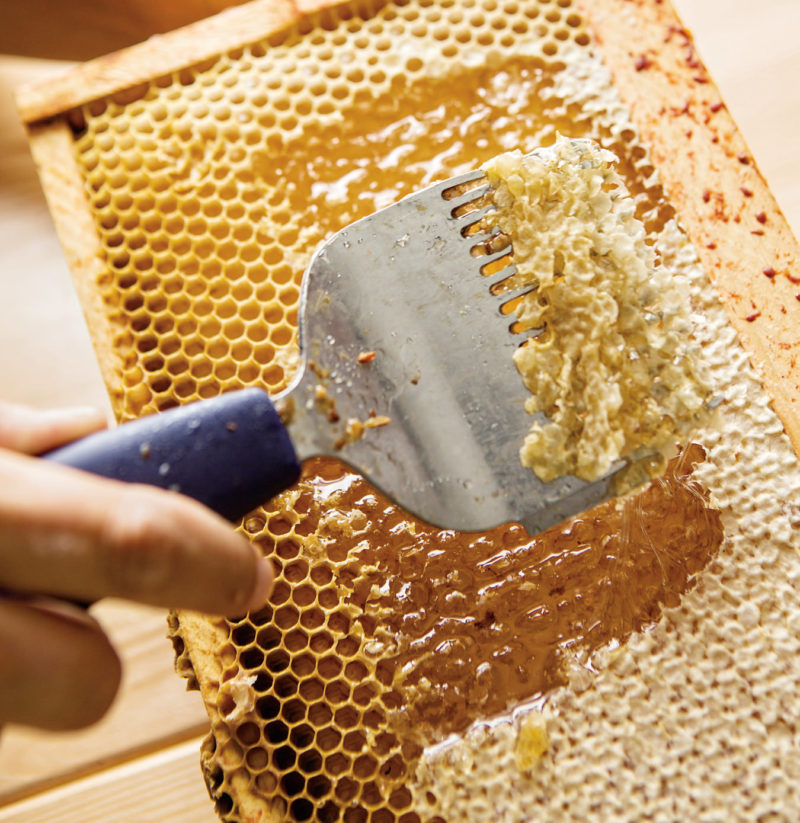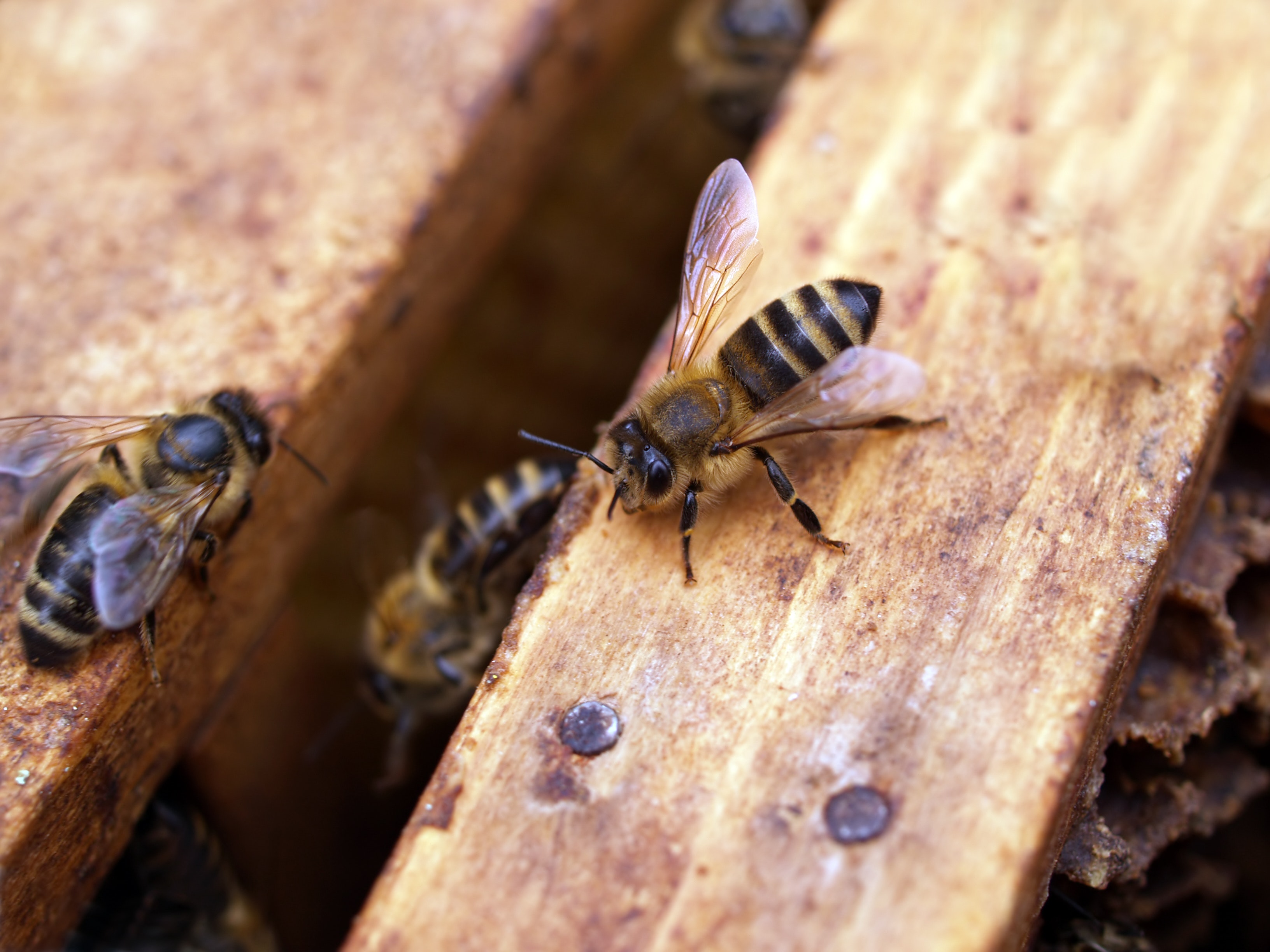Drizzle Honey, Calgary
The sweet luxury of raw, seasonal honey.
We’ve always known that honey is something special. A Mesolithic cave painting in Valencia illustrates an adventurous soul climbing up a thick trio of vines and reaching into a lofty beehive, risking painful stings and a nasty fall for a taste of liquid gold. Egyptian pharaohs were buried with jars of honey, and it was given as an offering to the gods of ancient Greece.
But in the last few decades, honey has been reduced in our imaginations. We’ve become used to the pasteurized honey available on grocery store shelves, and we tend to think of it as merely an alternative sweetener. But raw honey has a richness and complexity worthy of the near-mythological status it’s held throughout history.
Straight from the comb or creamed, raw honey, like wine, carries the terroir of the landscape and timeframe in which it was produced. The first spring harvest is dark and bold, with notes of caramel and chamomile. Summer honey, in contrast, is buttery and bright, with notes of oak and clover.
Canadian honey is celebrated for its sophisticated flavour profiles, delicate colour, and superior quality. Unfortunately, big-brand honey producers have begun to take advantage of this reputation, mixing Canadian honey with imported honey, sometimes even adding sugar, corn syrup, or chemically-adulterated product to increase the volume of output. This blended honey is then sold as Canadian under deceptive branding, driving down costs for the consumer, but undermining the ability of Canadian beekeepers to operate effectively.
Canadian honey is celebrated for its sophisticated flavour profiles, delicate colour, and superior quality.
In 2016, a petition was launched on change.org by beekeepers to encourage leading brands to return to 100 per cent Canadian honey. Over 75,000 signatures were collected, but little progress has been made.
However, craft honey companies, like Alberta-based Drizzle, are working to change industry standards. Aja Horsley, an environmental scientist, former beekeeper, and founder of Drizzle, praises not only the flavour of raw honey, but the nutritional value of it as well. “Filtering and heating honey changes the internal structure of it completely,” she states. “It’s essentially just a sugar syrup at that point. The enzymatic and microbial properties of honey are destroyed by heat. The closer to raw honey is, the more nutritional value it retains, and the better it tastes.”
Every step of the process of Drizzle honey, from flower to jar, is carefully considered and made as natural as possible. Honeybees collect pollen from remote, pesticide-free pastures. Instead of chemical fumigation, beekeepers use the tip-up method, where they open the hives and wait. This allows honeybees to disperse on their own time, causing less stress and resulting in a happier, healthier colony. The comb is then brought back to the processing facility, where workers cream the honey without heat, additions, or extractions.
Quality honey is a product that relies on the health of the environment, and the ability of beekeepers to make a living wage and provide responsible stewardship to their colonies. Bringing raw, sustainable, 100 per cent Canadian honey to your table is the sweetest way to show your support.
Photos by Paige Leigh Reist.
_________
Never miss a story. Sign up for NUVO’s weekly newsletter.

